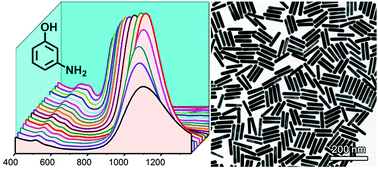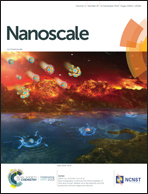High-yield synthesis of monodisperse gold nanorods with a tunable plasmon wavelength using 3-aminophenol as the reducing agent†
Abstract
Facile synthesis of high quality gold nanorods (AuNRs) with a tunable size is of great value for applications of AuNRs in various fields and for the study of the growth mechanism of such anisotropic nanostructures. However, limitations usually exist in a specific synthetic protocol. In this work, using 3-aminophenol as the reducing agent, we present a AuNR synthetic strategy with an excellent comprehensive performance, which includes an exceptional monodispersity, a AuNR shape purity of around 99%, a conversion ratio of the gold precursor of about 91%, and an easily tuned longitudinal surface plasmon resonance wavelength ranging from 580 to ∼1050 nm. Studies on the impacts of the experimental parameters including silver ions, gold seeds, reducing agent, and cetyltrimethylammonium bromide (CTAB) revealed a profound recognition of the significant effect of the reductive atmosphere, in synergy with other parameters, in directing the growth and structural evolution of the gold seeds, thus deeply affecting the size, shape yield, monodispersity, and morphology of the final structure. These results could be immensely useful for the application and revelation of the growth mechanism of AuNRs.



 Please wait while we load your content...
Please wait while we load your content...